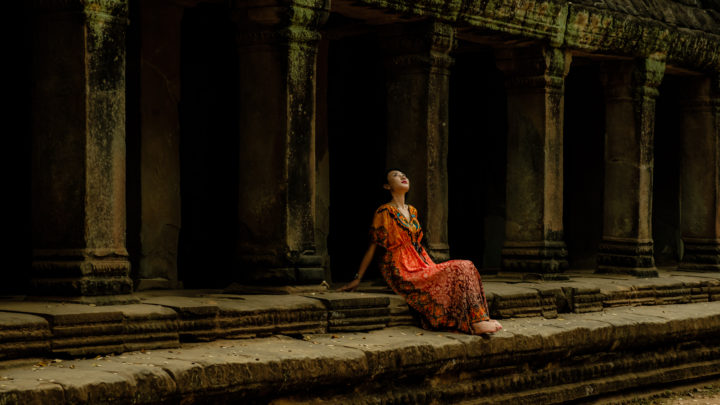Fujifilm – My Journey From Frustration To Competency
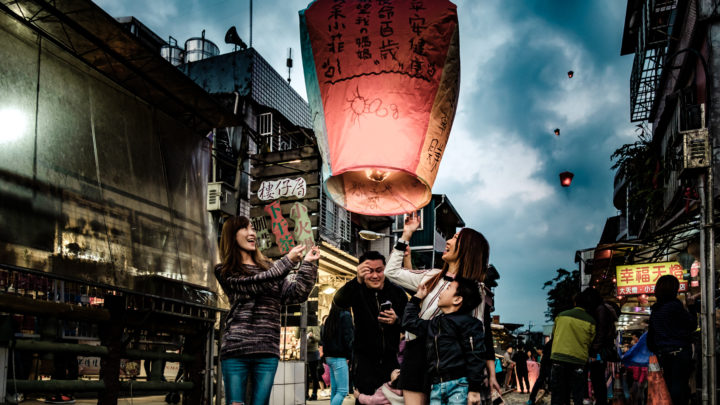
GUEST POST FEATURE
Write Your Articles Directly on FujiRumors!
guest post by Philip Sutton: philipsuttonphotography.com or on instagram at fineartfoto
Previous guest posts of Philip Sutton
- The Pleasure and Pain of Fujifilm Lenses! – Read here
- Fuji X-T1, X-T2 – A New Way of Seeing! – Read here
- Fuji X-T2 and X-T1 – a New Perspective on Myanmar in 2017 – Read here
- Fuji X-T2/X-T1 – Recce in Bali – Read here
A Quick Overview
If you have been following my blogs over the years you will have noticed that my ‘journey’ with Fuji has been quite a protracted learning curve. Without going over old ground too much – (you can go back and read all of the various stories in full detail on my old blogs), I first dabbled with the original X100 in 2011. I liked the concept, but the camera was lacking in so many ways – I put it in the cupboard and left it there. The following year I bought the X-Pro1, and with high hopes I sold off most of my Nikon gear and dragged the X100 out of the cupboard again. After one of my extended trips to Asia – I was very disappointed with the performance of those two Fuji cameras – I unceremoniously sold them off with disgust, bought a Nikon D3X and I was up and running again.
I loved the Nikon D3X just so much. It is an incredible piece of precise engineering, and it never ever let me down. However, it always churned over in the back of my mind how light the Fuji cameras were to use and how liberating they were. After one particularly arduous, hot and strenuous trip to Laos and Cambodia in 2014, I returned home with brilliant images, but rather fatigued at having to drag that huge DSLR around in the heat of Asia, with the very big 70-200, Nikkor attached.
I decided sometime in late 2015, to cautiously stick my toes in the water and just dabble back into the Fuji World again. In November of 2016, I took my wife for a surprise anniversary trip to Bali for a week. The only camera I took along was a newly acquired X-T1 and a 35mm F2 and 18-55 kit lens. I was very impressed with the X-T1 and even though it had some limitations, I began to think that perhaps FujiFilm was coming of age. I kept using the Nikon gear for local photoshoots, but I began turning more and more to the lighter system. The acid test was 12 months ago – I had a long planned trip of over 5 weeks to Myanmar – which system would I take?
I bit the bullet and bought one of the first copies of the newly released X-T2, ‘strapped’ an 18-135 to it, put the 35mm F2 on the X-T1, and I was off to Myanmar. You can read in detail on my blog discussing all of my findings on those cameras, the lens combinations I chose and lots of other interesting stuff. Suffice to say though (other than a few minor quibbles and the limitations of the X-T1), I was rather happy with the results from that trip and the reliability of my expanding Fuji kit.
Biting the Bullet
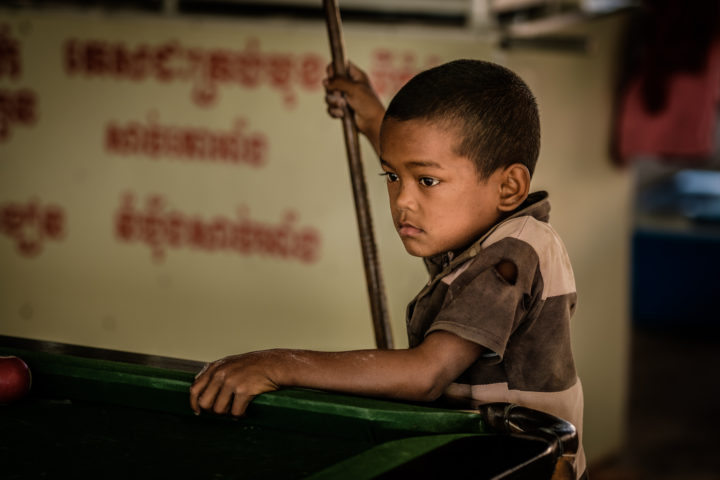
I also had to make a very hard choice – what was I to do with my Nikon system that was now gathering dust? Recently, I needed to finance another camera and two new lenses, so I made the very hard choice of having to sell off my beloved Nikon D3X and the last of the Nikon lenses – I was in boots and all now!
My lens ‘Journey’
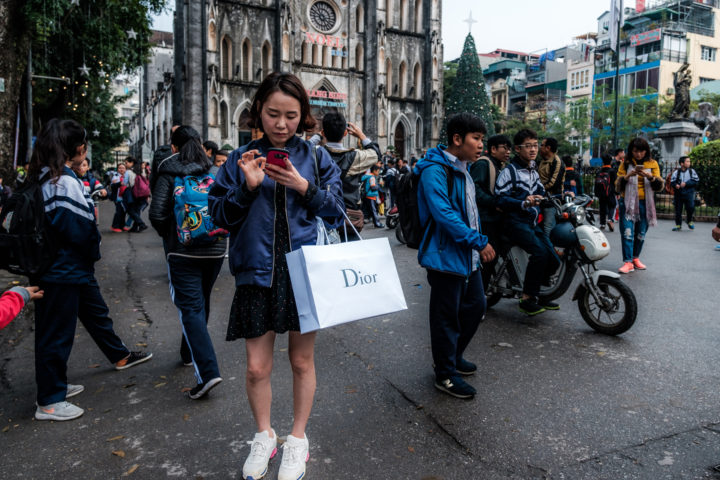
This now brings us to the present moment. After the trip a year ago in Myanmar, I planned my 14th trip to Cambodia at the end of 2017 to mid January 2018 – so here I am. I had five weeks and this time I did a week in Taiwan with my wife and her sister (the Taiwanese are the most marvellous, friendly people I have met anywhere in my life), a week in Hanoi in the north of Vietnam with my wife, 10 days in Siem Reap, Cambodia (alone), photographing village folk, the Temples and other fun stuff, then I finished off the journey with my wife and her lovely folk in HCMC, Vietnam.
The big focus of this trip was perfecting my lens combination for my two X-T2’s. I am a huge believer in never changing lenses. I shoot in very dusty terrible places in Asia, and the last thing I want is to be fiddling around in dusty conditions, changing lenses and letting a load of crud into my sensor. I have two cameras, a lens ‘glued’ on each one, and that is my full kit.
Even though all of this is documented on my blog – I will recap here. Over the years I have had 3 copies of the 18-55 kit lens. I kept buying new copies because I thought the first one was a dud. However, all the others were the same, so I came to the conclusion that this is a mediocre lens – at best. I know others write glowing reviews about it (not sure why), but if you want to be really discerning regarding your images – you need the best glass and unfortunately this kit lens does not fall into that category. I sold off my last copy of this lens last year.
I have written a complete blog documenting my thoughts on the 55-200 lens. This was my love/hate lens. This lens is just so unbelievably sharp. Most people don’t realise that, and think that it is like the 18-55 – a cheaper kit lens. This is not the case – this is an extremely sharp lens, and in some cases my copy was as good as the primes. However, here is where the ‘hate’ part came in. I have had two copies of this lens and both were identical. The first thing that let me down was it is not a sealed lens. Once again, my parameters (because of the dusty filthy conditions I shoot in Asia and often in the rain), I need a weather sealed lens (yes I knew this beforehand, so my fault). The other thing I found niggling with this lens is that both of my copies were loose or kind of clunky on the lens mount. When I zoomed to the longer end – the lens appeared to go very stiff (both copies), then it would grab a little and twist and clonk on the lens mount. This did not feel good at all. The third thing I disliked (like the 18-55), is that silly aperture selection ring that Fuji use on the cheaper lenses – it kind if just keeps turning around and around. You can bump it and short of looking in the camera – you never really know what aperture you are in. With all of that, I sold off my last copy of the 55-200.
I don’t need to say much about the 35mm F2. It is a lovely little lens and though I don’t use it much – I will never sell it. On the odd occasion I want to go light with one camera, it is a lovely small lens that is very sharp wide open. The other lens I don’t use much now but will never sell is my 18-135. I may sound contradictory here, but it is not especially sharp or wonderful at anything in particular. I hate it that I can’t separate my subject from the background, because as soon as you go over about 55mm it goes to 5.6. It is not fast enough to separate the subject like you can on a faster lens. However, this is the lens I used mostly on my trip last year in Myanmar and I have some wonderful images from it. Though I would never use it again as my main lens – and on paper it lacks in quite a few areas – it is one lens that I could never sell. If you just want one lens for a day that is good enough, and can do lots of different things quite well – then this is your baby. The fact that it is weather sealed allows me to keep it and then OIS is quite handy. In case you are wondering – yes it is noticeably sharper at the 18 and 55mm focal lengths than any of my 3 copies of the 18-55!!
My Current position regarding lenses
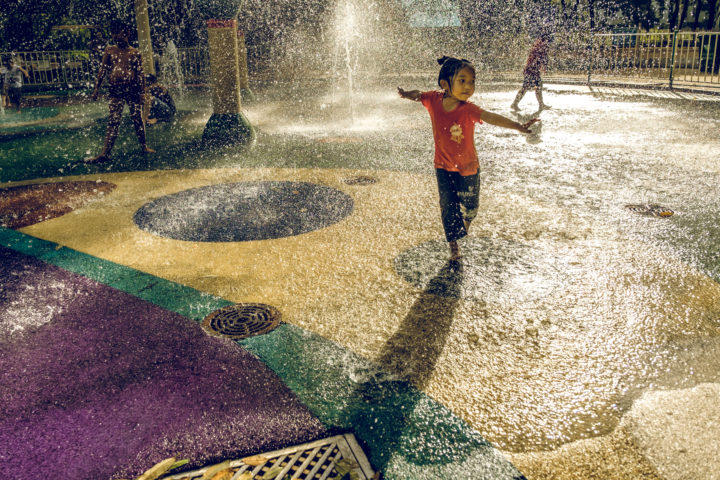
Last year (2017), was the year when everything kind of gelled for me, as I prepared for this 5 week trip. As I have just mentioned, you will see how I came to the conclusion that the lenses I had used in the past had to go or be retired, and I had some new decisions to make regarding what to bring on this current trip. As I sat at my desk last year – with a camera cupboard almost completely depleted of Fujinon lenses, I started to research long regarding what to replace those lenses with. Time and time I kept reading about something called ‘the brick’. One particular character on DPReview, relentlessly bagged out this lens, and with a little ‘tongue/n/cheek’, stirred up the Fuji fraternity on that site.
I live in a small gold-mining town in the middle of the Australian desert. There are no camera shops there, so I never have the luxury of trying a lens before I buy it. My nearest shop is 600Kms away in Perth and we don’t go there often. We have no return policy in Australia like you guys have the luxury of in the States. When we buy something it is for keeps. I needed a lens that was no compromise sharp, weather sealed, fast and went from wide angle to medium zoom, and preferably OIS. The only lens that came close was fuji’s 16-55 F2.8 – yes ‘The Brick’. The thing that put me off was the no OIS. However, there were no alternatives so I bit the bullet and forked out my hard earned $1,600. To cut a long story short – I love this lens. I love it so much I am seriously thinking of epoxy resin(ing) it to my X-T2 so it can never be taken off (joking of course). It is a delight to use, equally as sharp as my 35mm F2, it handles just so beautifully – no clunking, no lens creep – just a magic magic lens. Oh my goodness – when you compare a photo shot wide open on this lens, to one wide open on the 18-55 – they are poles apart. Did I say it is tack sharp wide open.
The one thing where I almost didn’t buy this lens – no OIS – matters not at all. I have never once wished that I had it, have never got a blurry shot and I am actually glad now that it does not – it would have been even bigger and more expensive and probably not as sharp. I have never ever thought it was a ‘brick’ or too heavy. I carry it on a Neoprene strap around my neck and as they are springy and stretchy, they appear to make the camera weigh half the weight of what normal straps would do.
I always shoot with two cameras ‘deployed’, my main one being the wide angle to medium zoom (16-55), that is the one I use for most of my shots and it is always around my neck ready to be grabbed at a moment’s notice. I now had one of my two lenses in the bag – which one for the second lens? The second camera always hangs at my side on a BlackRapid strap. I always have a telephoto or medium telephoto type lens on this camera, so I can zoom in on the subjects that are further away. I don’t use this combo as much as the 16-55, but nevertheless it is a very important focal length – so I had decisions to make! In Fujinon, there are not too many choices. The 50-140 is way too huge and expensive, the 56mm lenses are too ‘short’. The 90mm seemed about the closest fit. Even when I had my Nikkor 70-200 – I very seldom ever used the 200mm length. Around the 135-150mm, is about the longest I seem to need. Without much deliberation, I purchased the 90mm F2. Having looked at most of the photos now from my trip (I’m back home now), I have only missed a handful of shots, because of camera shake on lower light. It would have been OK if it had OIS – but certainly not a deal breaker. If you keep in mind that there is no OIS, and shoot accordingly, there is usually no problem. This lens is very sharp and the images from it are beautiful.
Oh that Flippy Screen!!
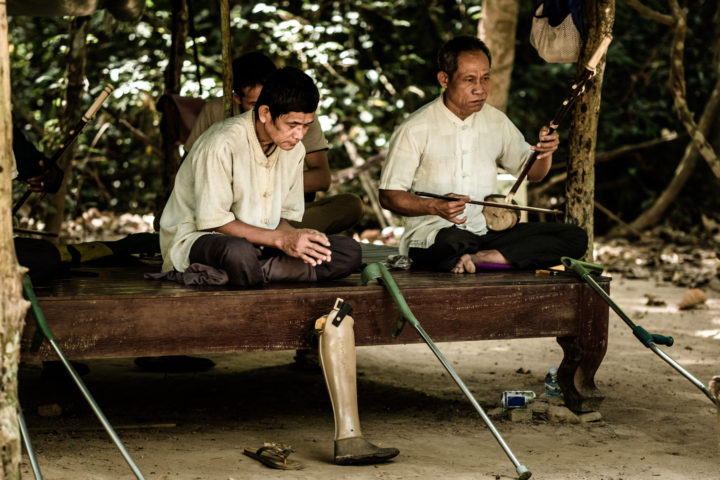
In one foul swoop Fuji revolutionised the way I shoot, upped my keeper rate by ten-fold, and totally destroyed my favourite camera!! I didn’t realise when I first bought my X-T1 that I was solving one of my worst dilemmas. I almost 100% shoot street and people photography. I have zero interest in animals, BIF, scenery, landscapes – the human race and all of their idiosyncrasies, is what really drives me. The other morning at the sunrise over Angkor Wat, here were the myriads of people pressing in one giant throng, vying for the best position for their sunrise – I was over on the outskirts, photographing the human interactions – I had the place to myself.
Therefore, with my Nikon system my greatest dilemma was trying to be discreet. Every time I lifted my camera to my eye to get the shot, people would freeze, wave, smile, say no – whatever they did I had lost ‘the moment’. When I got the flippy screen on the T1, I really knew I was onto something. My keeper rate has gone up ten-fold now and my street shooting experience is sooo much more enjoyable. This is how I operate now. I dress kind of Goofy on purpose – to be a bit of a mystery. I always wear black leather gloves – keeps my greasy/sweaty paws from destroying the nouveau leather on my cameras – believe me they last much longer. I wear a bandana over my face. I have two small ThinkTank bum packs around my waist – on their patented strap. My X-T2 hangs over my shoulder with the 90mm on the Black Rapid strap, and the other T2 over my neck, resting lightly on top of the ThinkTank bum pack.
I walk slowly along looking pleasant and friendly, but always scanning for my shot. The flippy screen is opened out horizontally on the X-T2 with the 16-55. Here is the kicker – I Never Ever make eye contact. If you make eye contact you have already ruined most of your chances – because they now know that you know that they know. In other words, once they know that you have zeroed in on them with your eyes, they are aware that you have singled them out – stalking them for a shot perhaps? The fact that you know that they now know – just changes the balance in the whole scenario.
Back to my MO (Modus Operandi), when I see my shot I walk slowly toward that area – looking down now, into my screen. I am watching everything now through my flippy screen – not looking at the people/person. I always appear to everybody that I am just fiddling with my controls, looking down – but never directly at them. I slowly swing the camera in their direction, when it is lined up, whammo – my shot is in the bag.
This is a magic system. Over 90% of all my shots are done this way now. I hardly ever lift the camera to my eye – I nearly always shoot from the hip. Ninety odd percent of the time people never even know that they have been photographed. I always get my moment, because I am just a stranger wandering by, I am not talking, interacting or even making eye contact. They never stop what they are doing, the ‘moment’ never changes, and I am usually always able to record it without being an imposter, or altering their world. It also has the added benefit of my photos being taken at a different perspective. A much more pleasant shot from waist level rather than high up from the eye looking down on people (a bit like the old Rolleiflex).
Take for example the photo above of the musicians. I saw from a distance the photo I wanted. I needed the guys to be serious – almost a little sad, and the man in front – I needed him looking down at his prosthetic leg. However, I stood back and observed for a while. As the other tourists went past and stopped – then lifted their camera to their eyes, the man in front would smile and wave, then he would pose with the two finger sign like they always do in Asia. A great record shot but good for nothing else. If that was the only photo I could get I would not have even bothered. I then did my normal thing – I slowly wandered by, making no eye contact – just looking down and apparently fiddling with my camera controls. I had the image I wanted before anybody had even realised I took a photo. I did not disturb the musicians, they did not need to pose or interact with me – they just carried on as if nobody was there – and best of all, the image was already in the bag!!
It makes me laugh so much when I read so called experts on YouTube giving ‘advise’ on how to be a good street photographer. They tell you to smile, interact, chat, and the worst thing of all – ask permission – oh my goodness!! Yes, you will probably get your permission, but your moment is gone. People will then be self-conscious, they will pose and smile -you’ll get a nice record shot – but that’s about all. I am so excited about this new method of shooting that I’m going to dedicate a whole blog to the subject – stay tuned!
You can imagine how I was totally mortified and bewildered when Fuji introduced the new 100F WITHOUT a flippy screen – were they stark raving bonkers??? This is supposed to be their ‘street’ camera – why on earth in their infinite wisdom would they leave out the flippy screen? I have the older 100s, and it has always been a favourite. However, since I have developed my much more successful system for street photography, this camera is now totally obsolete. I even tried to use it in Siem Reap recently, and I got ‘sprung’ every time, lifting the camera up to eye level. They either waved me on, or put the two fingers up sign like they do in Asia (a friendly gesture), or froze or whatever they did, but my ‘moment’ was well and truly gone. So I am very sad to announce that my favourite little camera is destined for ‘fleabay’! What I mean is that I would have to sell it anyway and replace it with the X100F – but what’s the point, it has no flippy screen!
Inle Lake
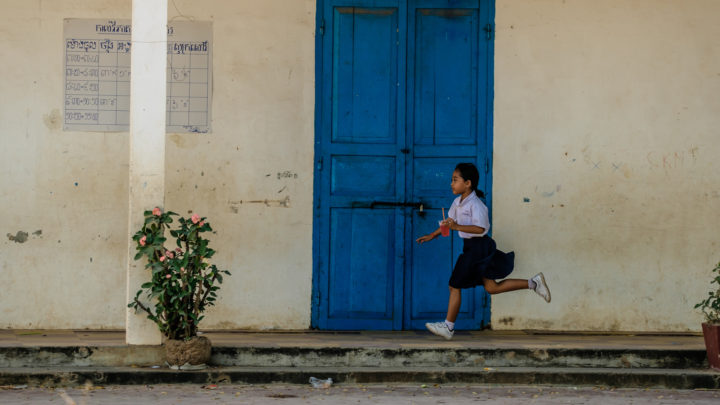
You would have read about this in my blog a year ago – in all its terrifying, horrific detail. However, as this is one year on I really want to mention this again. In the very early hours of the morning – almost in total darkness, I walked off the end of the jetty at Inle Lake in Myanmar. I had my full camera kit strapped around my waist!! My poor hapless boat driver was getting things ready, and it was so dark the water looked the same colour as the wooden jetty – and I unceremoniously walked straight off the end of the pier. I went fully under, and like a drowned rat I popped back up. The driver grabbed me by the scruff and hauled me – like a limp rag-doll – back onto the jetty. My X-T1 was sitting in the bottom of my camera bag, with no lens on it. As bad luck would have it I had lost the body cap, so the camera filled up with water and was ruined immediately. You can see why now my policy is to ‘glue’ one lens on to each camera and leave it there.
However, my X-T2 had the 18-135 attached, both of these items are weather resistant. The ThinkTank with the T2 and lens attached was fully half filled with water by the time I got my camera out. The camera and lens were totally soaked – water seemed to be pouring from every orifice. To cut a very long story short – and this is now over 12 months later – I still have that very same X-T2 and the 18-135mm lens. I am very happy to report that both are working perfectly. They were never sent in for repairs, the lens never got any condensation inside and the camera works exactly the same as its new counterpart. I am very happy to report that Fuji’s WR system really really works. You can see why I will never use a lens or camera now that does not sport the WR insignia.
Where to next?
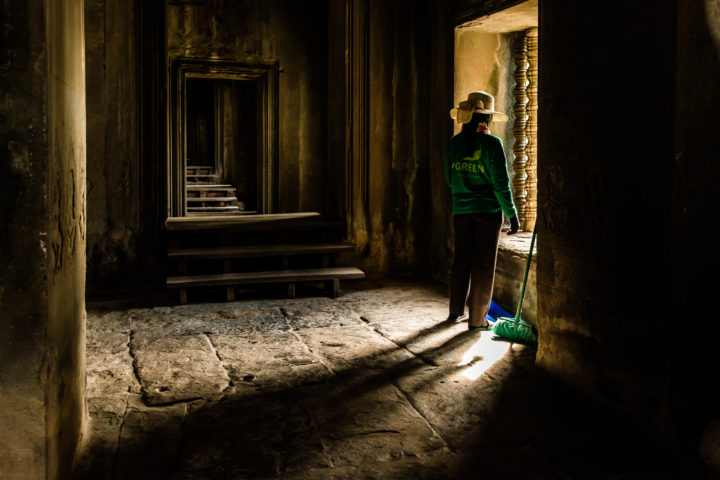
I am feeling very satisfied right now with my current setup. I can honestly say that in over 35 years as a photographer, I am in the least ‘hankering’ mode for new gear, than I have ever been. Even in the film days with my Nikon F3, f4, F5 etc, I was always longing for another motor-drive, a different lens or just something to ‘perfect’ my gear setup. Having just been back a week now from my trip, and having waded through some of my 12,000 odd images, I can say I am very happy with my setup, and really need to change nothing for my next trip later this year. My same two lenses will remain ‘glued’ to each of the X-T2’s, and the poor sad 18-135 and 35mm F2, will probably stay in the cupboard and be barely used. This has been a long, sometimes frustrating journey, of over 7 years, but it is great to say that the current Fuji products are up there with the very best of today’s modern DSLR cameras, and just maybe – sometimes – even better!!
Just as one final point though, remember that newer does not necessarily mean better. The only one piece of equipment that I really miss a lot is my X-T1 (the one that ‘drowned’ in Inle Lake). This is hard to quantify, I really can’t tell you why or show you any examples – but there was something about the images from my X-T1, that I really miss and can’t seem to exactly reproduce in my X-T2’s. These are not just my observations – there is a guy called Eric who posts on Youtube as ‘Finding Middle Earth’. He has both cameras and says in one of his latest videos that he prefers shooting with his X-T1! I did miss some shots on the T-1, because the autofocus tracking was not as refined as it is in the newer model – but except for that one fact, I could just as readily go and shoot all day with an X-T1, as opposed to either of my X-T2’s. There is something about the files from that 16mp sensor that just looked so beautiful and smooth. This is not a criticism of my current cameras, only an observation. Many of the images I have brought home are amazing, and the T-2’s are great cameras – but newer does not necessarily mean better.
Kissing the Guitar
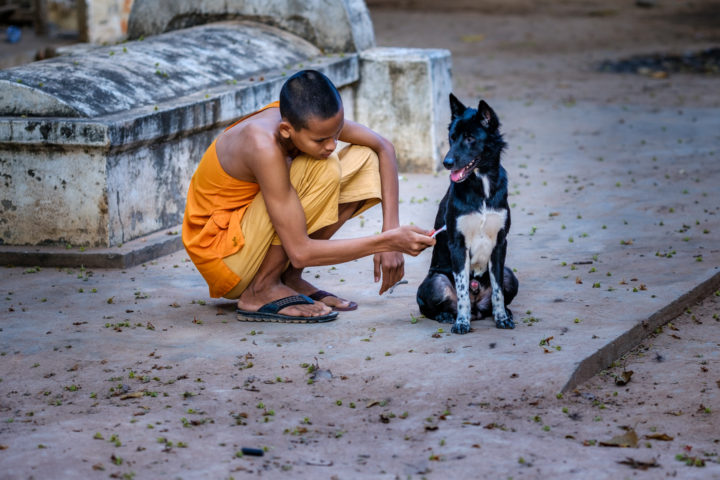
I love to listen to quiet reflective music – music of good quality by some of our most iconic artists – two of whom are Mark Knopfler and Van Morrison (showing my age now). I recently watched a fascinating documentary on YouTube of Mark Knopfler talking about six of his most iconic/famous guitars. It was a wonderful story – talking about the first guitar his dad bought him for ‘fifty quid’, some of the iconic guitars from the Dire Straits days, and one or two of his most expensive, unique guitars. The interviewer went on – after asking him about each of the five guitars – Knopfler picked up his favourite. You could see that look in his eye. He is in his mid-sixties now, but he was like a kid filled with zeal and enthusiasm for his craft and his passion for his equipment. Then without warning and totally spontaneously – he kissed his guitar. I instantly thought “whammo – that’s it, I’m not totally bonkers after all”!! Back in my Nikon D3X days, I had sometimes been so filled with excitement and love and passion for my equipment and their images, that I would find myself spontaneously kissing my D3X – now of course not in the presence of my wife. She thinks I am totally nuts about my photography (it gets me into lots of trouble) – if she caught me kissing my camera then she would have me clinically ‘Certified’. However, I had never kissed my X-T2. It (they), had never really given me the same experience as I had with my Nikon D3X. However, I am very happy to report, that on this current trip – and may I add, more than once – I kissed my X-T2. Oh Fuji – I think you may have finally arrived!
These images are only a sample from my trip – if you want to see more check out my website – philipsuttonphotography.com
guest post by Philip Sutton: philipsuttonphotography.com or on instagram at fineartfoto
